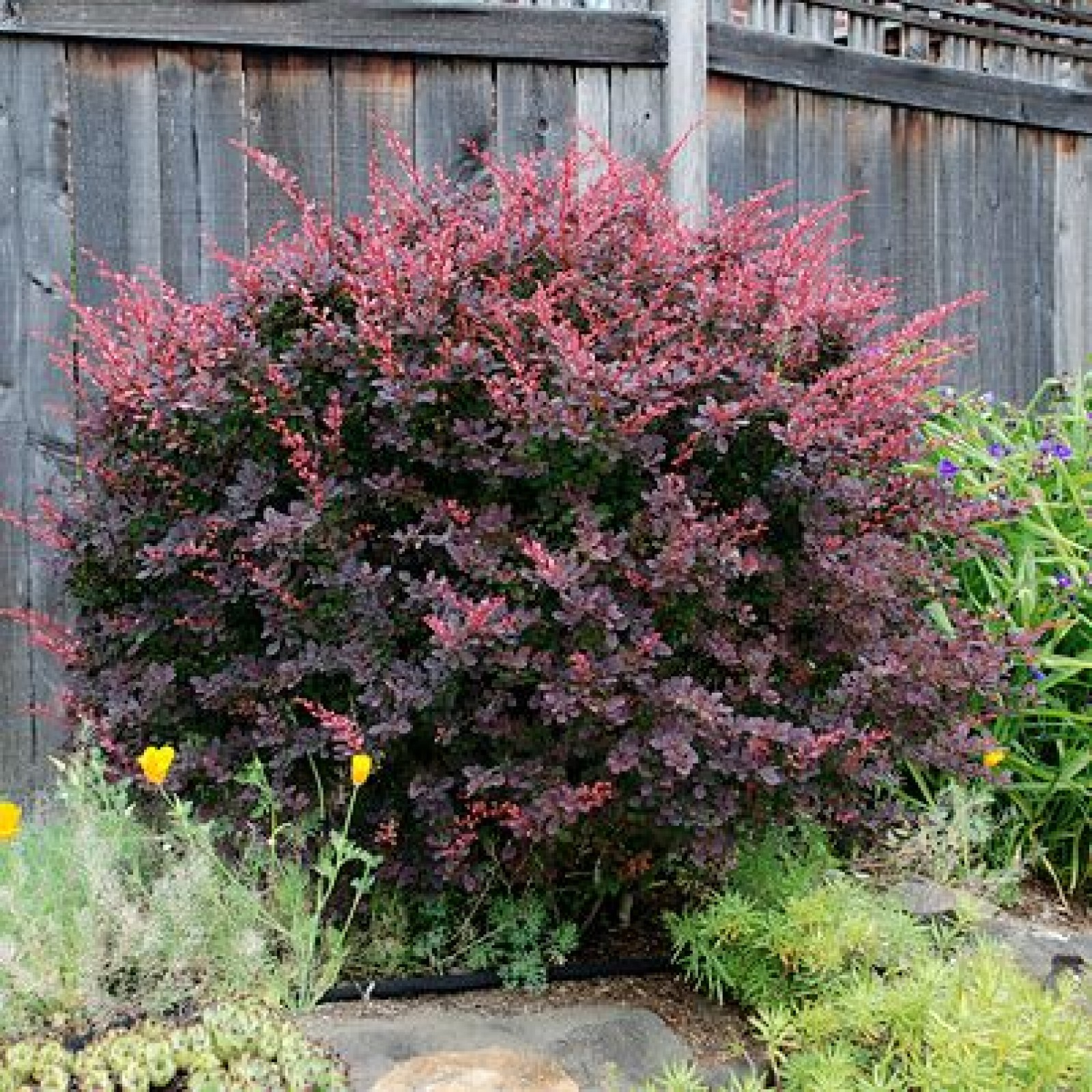
Berberis thunbergii atropurpurea Rasadnik „Jelena”
A vigorous, bushy deciduous shrub about 1m tall, with rounded, dark reddish-purple or purplish-bronze leaves to 3cm long that turn red in autumn; small red-tinged, pale yellow flowers in spring are followed by glossy red autumn berries Synonyms Berberis thunbergii 'Atropurpureum' Berberis atropurpurea Join the RHS today and save 25% Join now © RHS
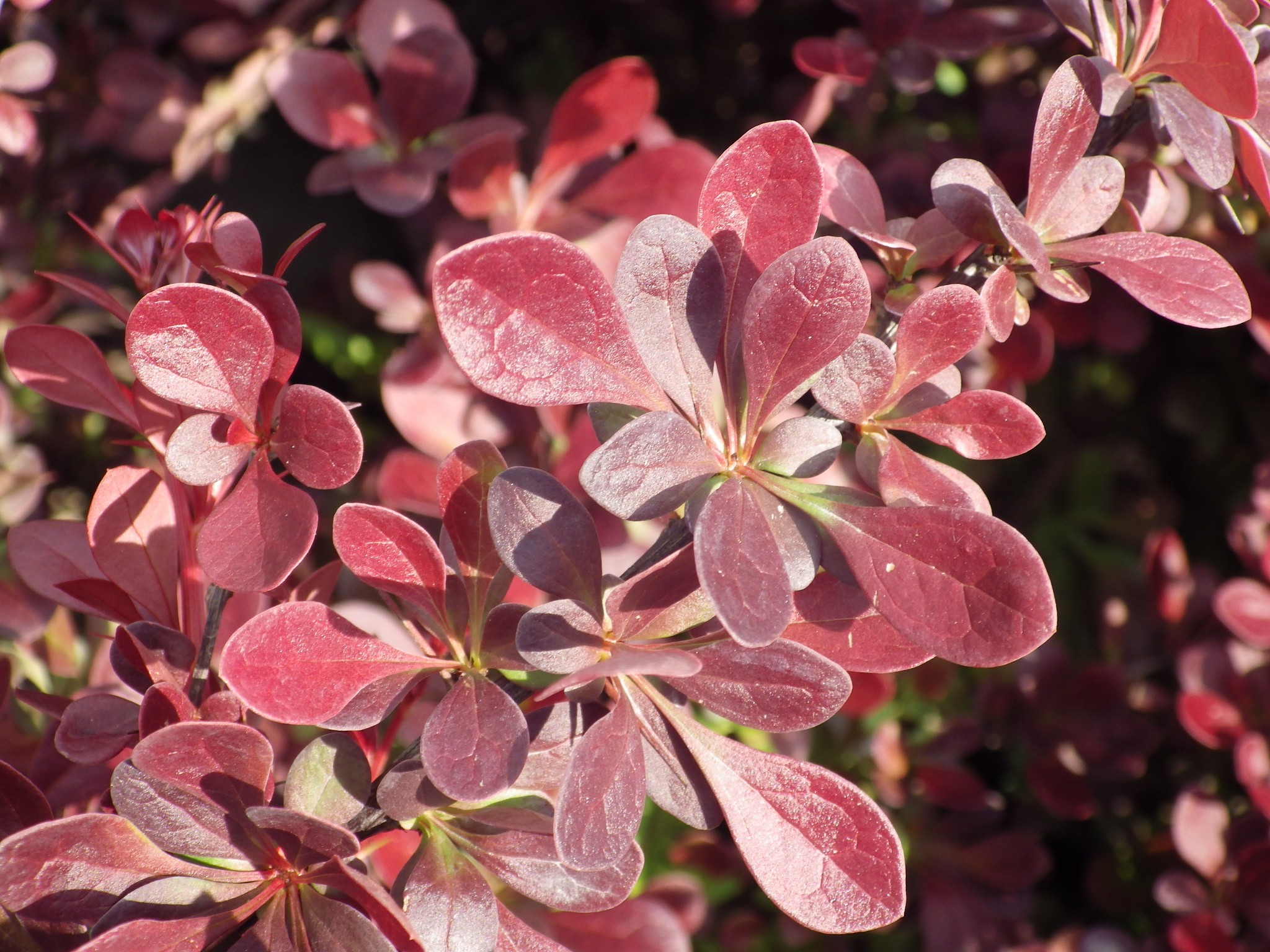
Berberis thunbergii 'Atropurpurea' Pépinières de la Rivière Pépinière Jardinerie Décoration
Berberis thunbergii f. atropurpurea (Purple Japanese Barberry) is always a spectacular addition to the landscape, bringing a strong color accent from spring to fall. This dense, arching, deciduous shrub features broadly oval, reddish-purple leaves, which turn into brilliant red or red-orange shades in the fall.

Berberis thunbergii Atropurpurea Nana SC PANDORA BLUMEN SRL
Berberis thunbergii, commonly known as Japanese barberry, is a deciduous shrub that offers year-round interest in the landscape. Native: Berberis thunbergii is native to Japan and eastern Asia. Habit and Size: This medium-sized shrub has a compact, oval to rounded growth habit. It can reach heights of 2-6 feet (60-180 cm) in both height and.

Berberis thunbergii atropurpurea NANA Dwarf Purple Barberry Garden Plants
Berberis thunbergii, commonly called Japanese barberry, is a spiny, broad-rounded, deciduous shrub with obovate green leaves. It typically matures to 5' tall and as wide. Leaves (variably sized to 1 1/4" long) typically turn attractive shades of orange, yellow and red in fall. Forma atropurpurea have red to purple-red foliage.

Berberis thunbergii Atropurpurea Express Garden Shop
Even more vigorous, though a little less vicious, is Berberis x stenophylla with very dark, slender leaves and showy, fragrant, yellow spring flowers. In deciduous barberries, the old-favorite Berberis thunbergii 'Atropurpurea' has exceptional vigor, rich purple foliage, yellow spring flowers and red fall berries.
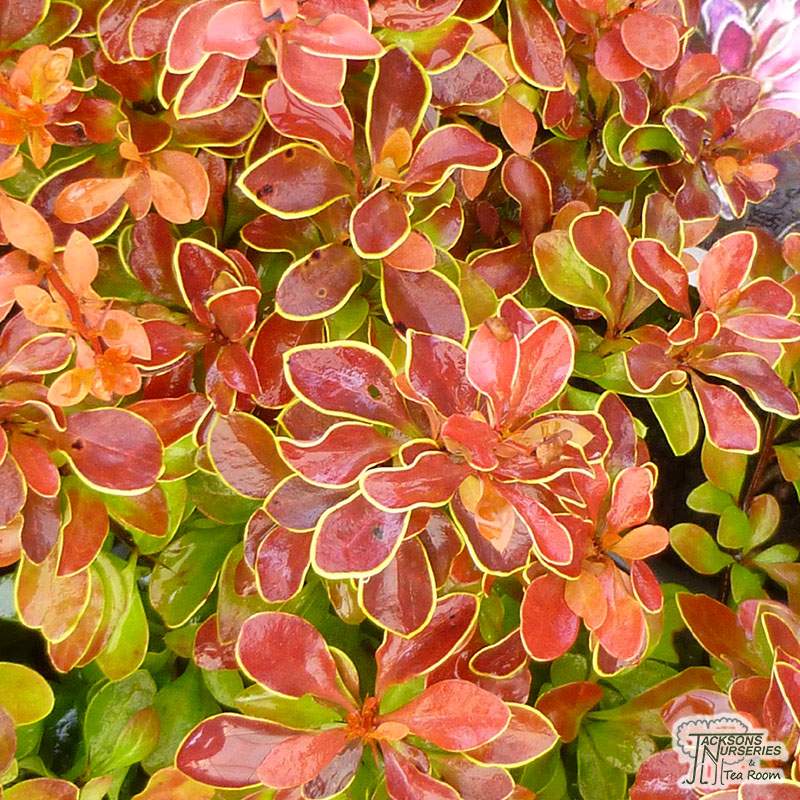
Buy Berberis thunbergii f. atropurpurea Admiration (Barberry) in the UK
B. thunbergii f. atropurpurea is a vigorous, dense, rounded, deciduous shrub with ovate, reddish-purple to bronze-red leaves turning red in autumn and umbel-like racemes of red-flushed, pale yellow flowers in mid-spring followed by elliptic, glossy, red fruit.
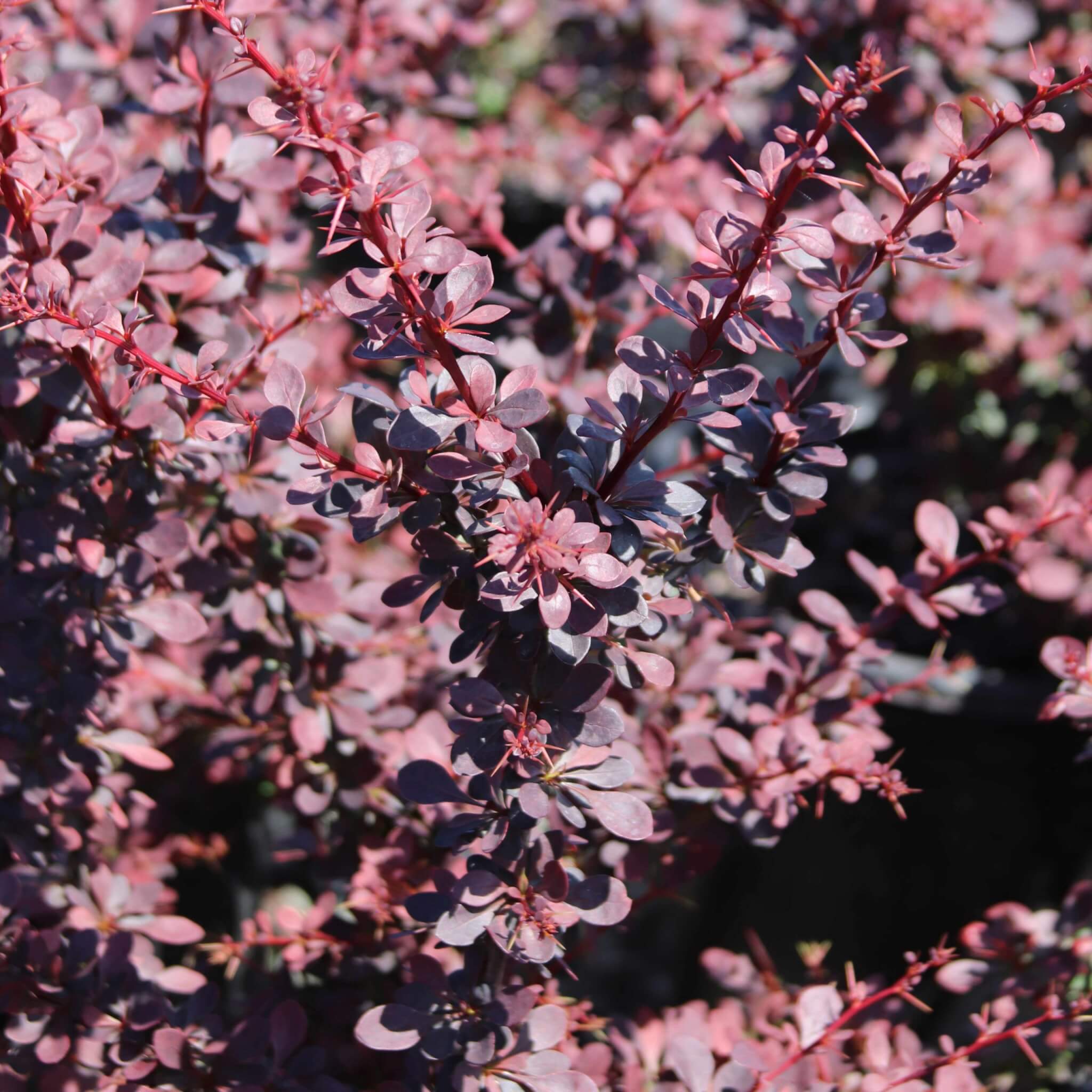
Berberis thunbergii 'Atropurpurea' Western Star Nurseries
Berberis thunbergii var. atropurpurea 'Crimson Pigmy' Phonetic Spelling ber-BER-is thun-BER-jee-eye Description 'Crimson Pygmy' is the most popular form of Berberis thunbergii due to its beautiful leaves and compact mounded habit. It is fairly pest-free, easy to grow and easy to care for. This plant is currently a popular dwarf selection.

Berberis thunbergii 'Atropurpurea' Vente pourpre pour haie
Berberis thunbergii, commonly called Japanese barberry, is a spiny, broad-rounded, deciduous shrub with obovate green leaves. It typically matures to 5' tall and as wide. Leaves (variably sized to 1 1/4" long) typically turn attractive shades of orange, yellow and red in fall. Forma atropurpurea have red to purple-red foliage.

Berberis thunbergii 'Atropurpurea' Pépinières de la Rivière
Pronunciation: BER-ber-is thun-BER-jee-a at-ro-pur-PEWR-ree-a Family: Berberidaceae Genus: Berberis Synonyms: Berberis thunbergii 'Rose Glow' Type: Broadleaf Native to (or naturalized in) Oregon: No Deciduous shrub, 4-5 ft (1.2-1.5 m), much branched, very dense, upright stems, thorny, purplish-pink foliage.
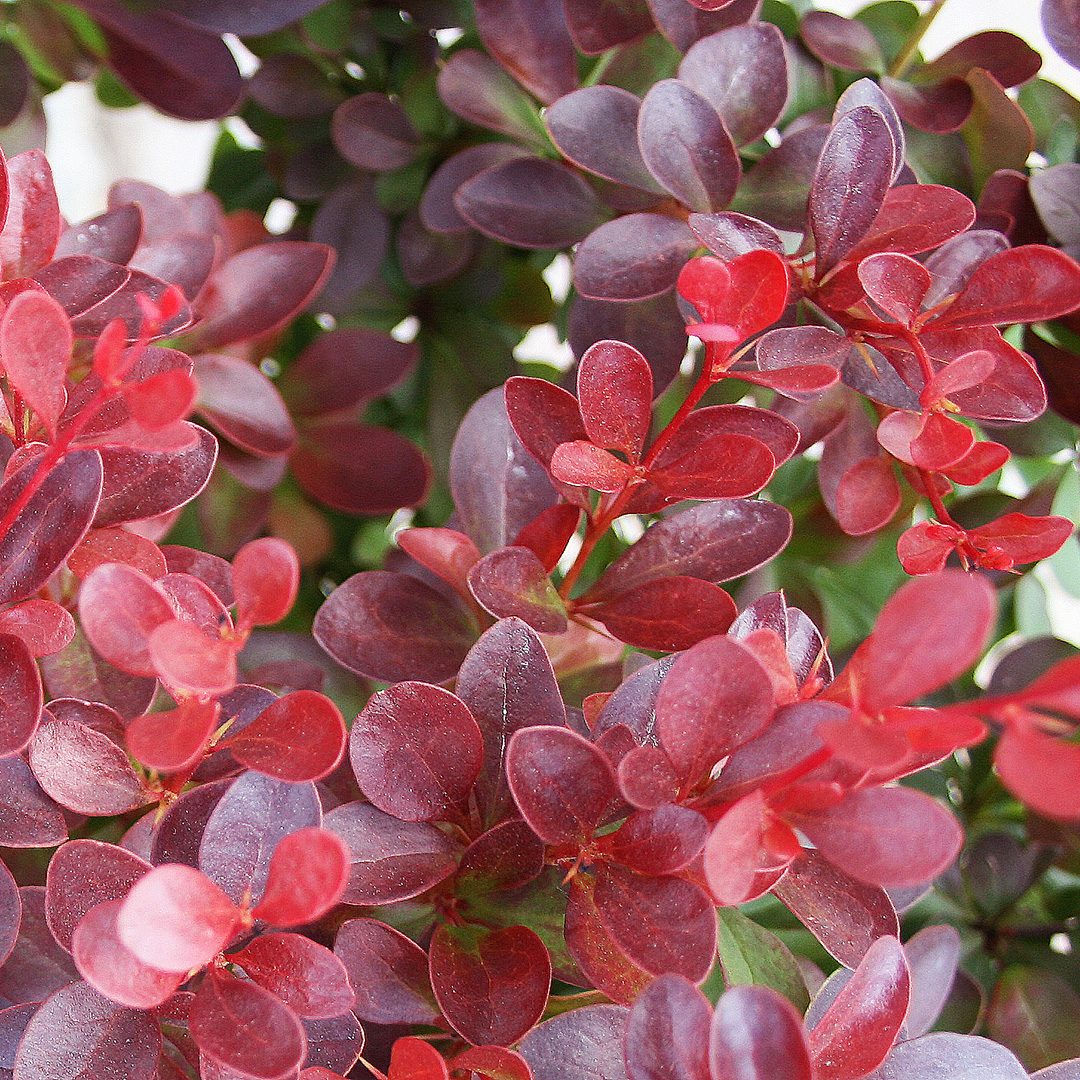
Berberis thunbergii 'Atropurpurea Nana' Midwest Groundcovers, LLC
This plant has a medium to a fine texture. This plant is intolerant of high heat loads and is semideciduous in the south. When birds eat its berries, the plant's seeds are spread, generally growing in shaded woodlands, wetlands, and fields. Quick ID Hints: Stems with only a single spine at each node Fruit bright red berry often persisting in winter

Berberis Thunbergii Atropurpurea 6090cm(23Ft) Bare Root Red Leaf Plant Hedging Plants from
Berberis thunbergii f. atropurpurea 'Harlequin' is an undemanding and easy-to-grow deciduous barberry. A good shrub for year-round interest, it boasts dark red-purple leaves, mottled with creamy pink, which contrast with small, red-tinted, pale-yellow flowers in mid-spring. In autumn the leaves turn a brilliant shade of red before falling.

Berberis thunbergii Atropurpurea 'Purple Barberry' Bare Root Hedge Hedging Plant eBay
It grows 3 to 6 feet tall and 4 to 7 feet wide. Plant in the full sun to light shade, in average to dry well drained soils. It is tolerant to a wide range of soil types including clay as long as the soils are not too wet. This shrub is hardy down to zone 4 and is resistant to browsing by deer, and is drought and air pollution tolerant.
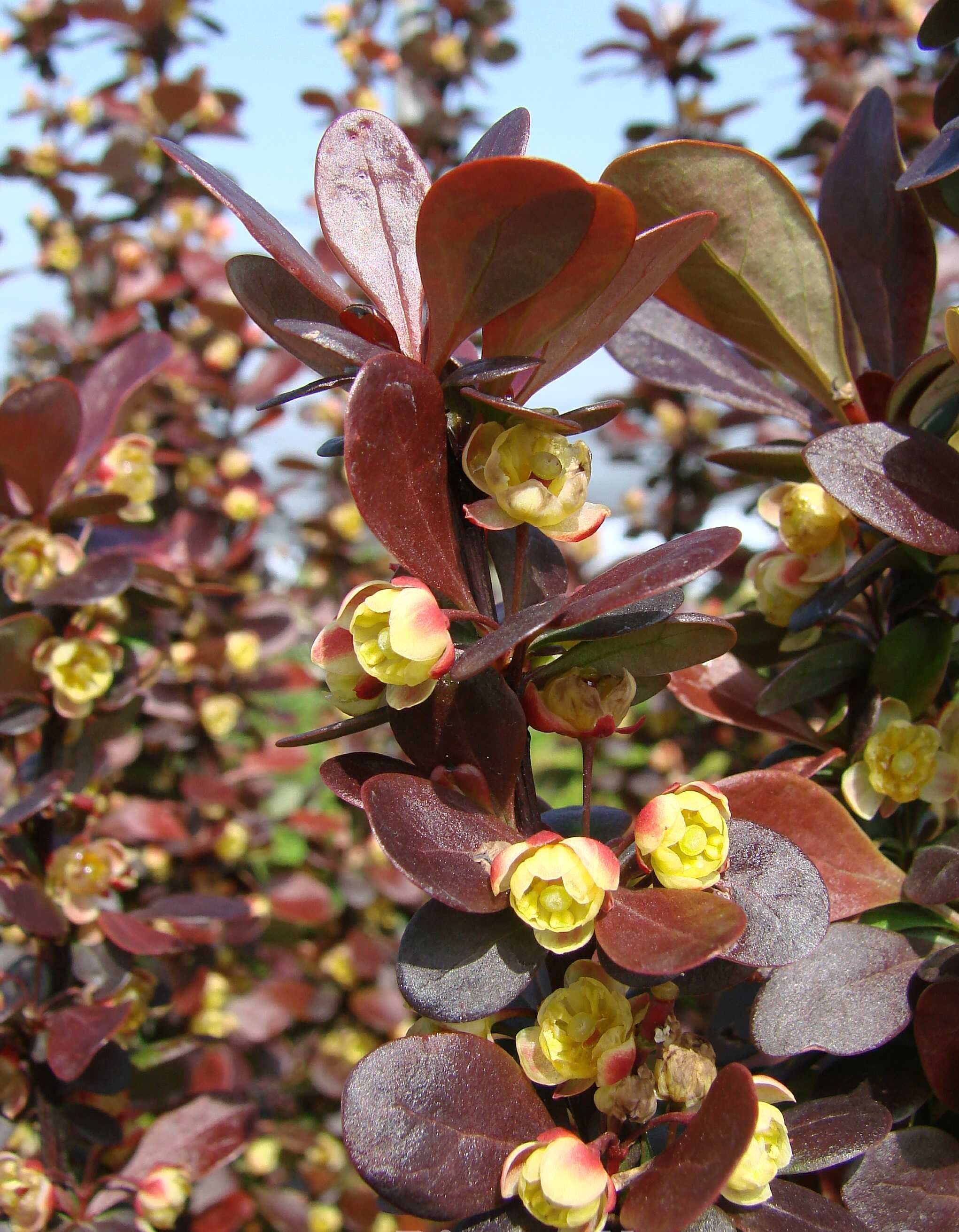
Berberis thunbergii f. atropurpurea 'Helmond Pillar' The Site Gardener
Fill the hole until the soil line is just at the base of the plant, where the roots begin to flare out from the main stem. Water the plant well then add a 2" (5cm) layer of mulch, such as shredded bark, around the planting area. Keep the mulch at least 4" (10cm) away from the trunk of the plant as this can keep the bark too moist and cause.

Berberis thunbergii var. atropurpurea (Japanese barberry, Purple Japanese barberry, Purple leaf
Berberis thunbergii, commonly called Japanese barberry, is a spiny, broad-rounded, deciduous shrub with obovate green leaves. It typically matures to 5' tall and as wide. Leaves (variably sized to 1 1/4" long) typically turn attractive shades of orange, yellow and red in fall. Forma atropurpurea have red to purple-red foliage.

Berberis thunbergii 'Atropurpurea Nana' (Zuurbes) De Tuinen van Appeltern
Berberis thunbergii var. atropurpurea Common name: Purple (Red) Leafed Japanese Barberry Pronunciation: BER-ber-is thun-BER-jee-a at-ro-pur-PEWR-ree-a Family: Berberidaceae Genus: Berberis Type: Broadleaf Native to (or naturalized in) Oregon: No

Berberis thunbergii Atropurpurea Express Garden Shop
Great for the rock garden too! Propagate by semi-hardwood cuttings Ingestion may cause mild stomach upset Berberis thunbergii species is invasive in the United States. The invasive potential of the more than 40 cultivars of Japanese Barberry is not well known. Discover beautiful U.S. native plant alternatives.